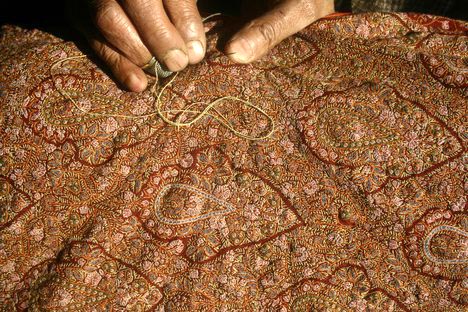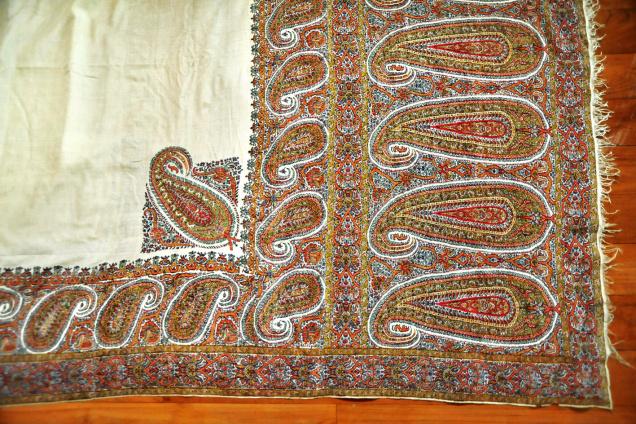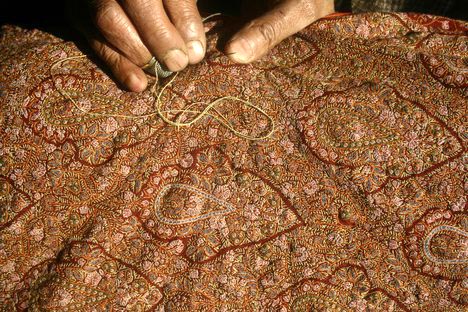
Jamawar
Jamawar (also spelled as Jamavar) is a fabric that has its roots in Kashmir. The word Jama means ‘a robe or shawl’ and War means ‘Yard (the measuring unit)’. People in the earlier times used to buy a yard of Jamawar Shawl to protect themselves from the chilly winter. The Jamawar is an adulterated form of Pashmina silk since it contains a blend of cotton and wool. Usually, a single shawl or fabric has a blend of many hues and colors, which renders an inimitable uniqueness to the shawls.
The design in a Jamavar is completely woven into the fabric with no loose threads on the back side, unlike Banarasi weave where loose threads are not stitched neatly at the back side of the fabric. Traditionally, Jamavar is used for making shawls. But, now it is also used in designing Sarees, blouses, bedspreads, tablecloths and curtains. The intricate paisley motifs and designs on a fabric truly gives a rich and distinctive look. , Jamavar shawls were handwoven, and crafted out of pure silk.
Traditionally, Jamavar is used for making shawls. But, now it is also used in designing Sarees, blouses, bedspreads, tablecloths and curtains. The intricate paisley motifs and designs on a Jamawar fabric truly gives a rich and distinctive look.
Origin and History
Traveling from Persia to Kashmir, this fabric reached the Indian subcontinent around five centuries ago, but this luxurious fabric reached its ultimate crest during the Mughal reign when Mughal emperor Akbar’s patronage gave way to this fabric in India.
Historically, Jamavar shawls were handwoven, and it used to take years and sometimes even a decade to finish weaving a single shawl. With the invention of Jacquard loom in the late 18th century, Jamavar became more affordable. The early 19th century saw major innovations in weaving. Skilled embroidery work and flawless weaves accentuated this fabric. However, by the end of 19th century, the art of Jamawar weaving began to fade away as the patronage of Mughals went down.
Historically, Jamavars were crafted out of pure silk and were exclusively worn by the royal and aristocrat class. Fortunately, with advanced technology and faster looms Jamavars are accessible to all nowadays.
Reviving the Art
In recent years, the Indian government has attempted and initiated some programs that work towards the revival of the Jamawar art. A Shawl weaving center at Kanihama in Kashmir was opened for promoting the production of these weaves.
Likewise, innovative production of these sarees by craftsmen in Varanasi are also helping in keeping intact the relevance of the fabric. Each Jamawar saree is a shimmering weave of intricate designs, where the palette spans from traditional rich shades to delicate pastels. Each Saree takes a minimum of three months to finish.
Innovations
Rapid innovations are taking place to make Jamwar more popular not just in India, but across the world.
To maintain the royal glory of the Jamawar sarees, most of the saree creations now have matching silk shawls attached to them. Jamawar Sarees are being woven using equal variants of Silk like Pashmina and Banarasi.
Weavers are also drawing inspirations from the weaving techniques from Bhutan.
Maintenance
The Jamawar silk weaves should preferably be dry cleaned. The cotton and other blends of Jamawar could be hand washed or slow machine washed using mild detergent.
References
Categories: Textiles


